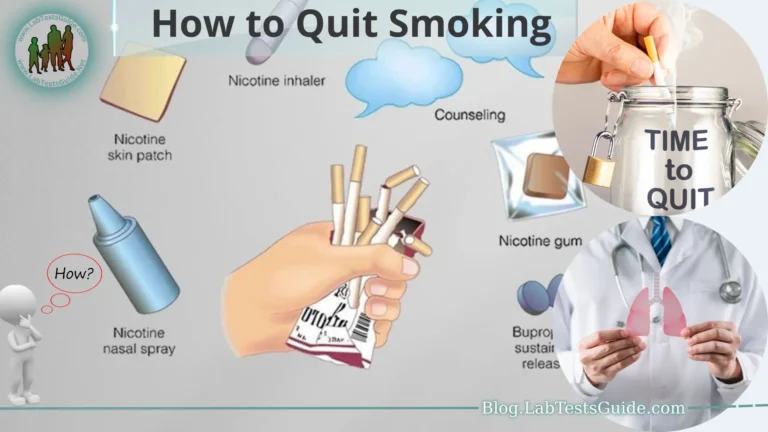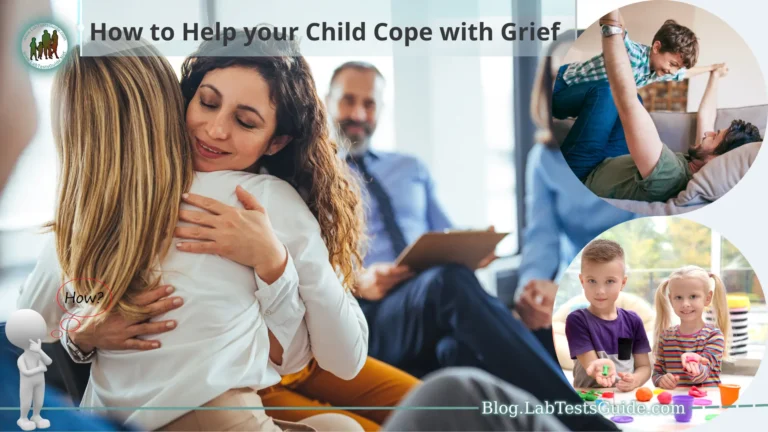Smoking is a highly addictive habit that poses significant dangers to both the smoker and those exposed to secondhand smoke. Understanding the risks associated with smoking is crucial for making informed decisions about one’s health and well-being. Quitting smoking can be challenging, but it offers numerous benefits and improves overall quality of life.

In this guide, we will explore the various health risks associated with smoking, ranging from lung cancer and cardiovascular diseases to respiratory problems and premature aging. We will also delve into the impact of secondhand smoke on non-smokers and ways to protect loved ones from its harmful effects.
Furthermore, we will discuss the addictive nature of smoking and the challenges of nicotine withdrawal. By understanding the addiction and withdrawal process, individuals can develop effective strategies to quit smoking successfully.
This guide will provide a range of approaches and resources to help smokers quit. These include setting a quit date, seeking support from friends, family, or support groups, exploring nicotine replacement therapy and prescription medications, considering behavioral therapies and counseling, and even exploring alternative therapies.
Moreover, we will offer practical tips for quitting successfully, such as identifying triggers and developing coping strategies, adopting healthier lifestyle habits, engaging in physical activity, and managing stress and emotional well-being. We will also address the potential challenges and relapses that may occur during the quitting process and provide guidance on how to overcome them.
Finally, we will provide a list of support resources, including national and international quit helplines, online communities and forums, mobile apps and digital tools, as well as local cessation programs and counseling services.
By the end of this guide, it is our hope that individuals will have a comprehensive understanding of the dangers of smoking and be equipped with the knowledge and tools necessary to embark on a smoke-free life. Quitting smoking is a transformative journey that leads to improved health, increased well-being, and a brighter future.
Health Risks Associated with Smoking:
Here are some Health Risks Associated with Smoking.
- Increased Risk of Lung Cancer: Smoking is the leading cause of lung cancer, accounting for approximately 85% of all cases. The harmful chemicals in tobacco smoke, such as tar and carcinogens, damage the cells in the lungs, leading to the formation of cancerous tumors.
- Cardiovascular Diseases and Stroke: Smoking significantly increases the risk of developing heart diseases, including coronary artery disease, heart attack, and stroke. The toxic chemicals in cigarette smoke damage the blood vessels, cause plaque buildup, and reduce the flow of oxygen-rich blood to the heart and brain.
- Respiratory Problems: Smoking damages the respiratory system, leading to various respiratory problems. Chronic bronchitis, emphysema, and chronic obstructive pulmonary disease (COPD) are common respiratory conditions associated with smoking. These conditions cause difficulty in breathing, persistent coughing, wheezing, and decreased lung function.
- Other Types of Cancer: Besides lung cancer, smoking is linked to an increased risk of several other cancers, including cancers of the mouth, throat, esophagus, pancreas, bladder, kidney, cervix, and even leukemia. The harmful chemicals in tobacco smoke can reach various organs and tissues, causing DNA damage and promoting cancer development.
- Reduced Fertility and Reproductive Issues: Smoking can negatively impact fertility in both men and women. In women, it can lead to reduced fertility, menstrual irregularities, increased risk of miscarriage, premature birth, and low birth weight in babies. In men, smoking can affect sperm quality, leading to decreased fertility and an increased risk of erectile dysfunction.
- Premature Aging and Skin Problems: Smoking accelerates the aging process, resulting in premature wrinkles, fine lines, and sagging skin. It also contributes to skin problems such as dull complexion, uneven skin tone, and increased risk of skin cancer. Smoking restricts blood flow to the skin, reducing its oxygen and nutrient supply, which affects its health and appearance.
- Impact on Overall Health and Well-being: Smoking affects nearly every organ in the body and is associated with numerous health issues. It weakens the immune system, making smokers more susceptible to infections, respiratory illnesses, and other diseases. Smoking also impairs the sense of taste and smell, reduces stamina, and hampers physical performance.
It’s important to note that the health risks mentioned above are not exhaustive. Smoking has detrimental effects on almost every aspect of health, increasing the likelihood of various diseases and health complications. Quitting smoking is essential to minimize these risks and improve overall well-being.
Secondhand Smoke:
Secondhand smoke refers to the smoke that is exhaled by a smoker or emitted from the burning end of a cigarette, cigar, or pipe. It is a mixture of the smoke that comes directly from the tobacco product and the smoke that is exhaled by the smoker. Secondhand smoke contains more than 7,000 chemicals, including at least 70 known carcinogens (cancer-causing substances).
Health Risks for Non-Smokers:
- Increased Risk of Lung Cancer: Non-smokers who are exposed to secondhand smoke have an increased risk of developing lung cancer. The chemicals in secondhand smoke can be inhaled by others, causing damage to their lungs and increasing the likelihood of lung cancer.
- Respiratory Problems: Secondhand smoke can cause respiratory issues in non-smokers, particularly in children. It can trigger or worsen asthma symptoms, increase the frequency and severity of respiratory infections (such as bronchitis and pneumonia), and lead to coughing, wheezing, and shortness of breath.
- Cardiovascular Diseases: Non-smokers exposed to secondhand smoke have a higher risk of developing cardiovascular diseases, including heart disease and stroke. The toxic chemicals in secondhand smoke can damage blood vessels, promote the development of plaque, and increase the risk of heart attacks and strokes.
- Increased Risk in Children: Children exposed to secondhand smoke are particularly vulnerable to its harmful effects. They have an increased risk of sudden infant death syndrome (SIDS), respiratory infections, ear infections, asthma, and impaired lung function. Secondhand smoke exposure can also affect children’s cognitive development and increase the likelihood of behavioral problems.
Protecting Loved Ones from Secondhand Smoke:
- Establish Smoke-Free Environments: Make your home and car smoke-free zones. Encourage friends and family members who smoke to refrain from smoking in your presence or around children.
- Support Smoke-Free Policies: Advocate for and support smoke-free policies in public spaces, workplaces, and recreational areas. This helps protect not only non-smokers but also smokers who may be motivated to quit.
- Ventilation and Air Filtration: If you encounter secondhand smoke in public spaces or shared environments, ensure proper ventilation and air filtration systems are in place to reduce exposure.
- Educate and Communicate: Raise awareness among smokers about the dangers of secondhand smoke and the impact it has on the health of non-smokers. Encourage open communication and understanding within your social circles.
- Encourage Smoking Cessation: Offer support and resources to smokers who want to quit. Quitting smoking not only improves their own health but also protects those around them from secondhand smoke.
Reducing exposure to secondhand smoke is crucial for promoting a healthier environment and protecting the health of non-smokers, especially vulnerable populations such as children and individuals with respiratory conditions.
Addiction and Nicotine Withdrawal:
- Understanding Nicotine Addiction: Nicotine is a highly addictive substance found in tobacco products. When a person smokes, nicotine is rapidly absorbed into the bloodstream, reaching the brain within seconds. In the brain, nicotine stimulates the release of dopamine, a neurotransmitter associated with pleasure and reward. Over time, the brain becomes dependent on nicotine to maintain a certain level of dopamine, leading to addiction.
- Nicotine Withdrawal Symptoms: When a smoker tries to quit or significantly reduces their nicotine intake, they may experience withdrawal symptoms. These symptoms can vary in intensity and duration but typically peak within the first few days of quitting and gradually subside over several weeks. Common nicotine withdrawal symptoms include:
- Intense cravings for nicotine
- Irritability, restlessness, or mood swings
- Anxiety or depression
- Difficulty concentrating or decreased cognitive function
- Increased appetite or weight gain
- Insomnia or disturbed sleep patterns
- Headaches
- Fatigue or lack of energy
- Duration of Nicotine Withdrawal: The duration of nicotine withdrawal symptoms can vary from person to person. Generally, most physical symptoms peak within the first week and gradually improve over time. Psychological symptoms, such as cravings and mood changes, may persist for longer periods, often triggered by environmental cues or emotional factors. It’s important to note that while withdrawal symptoms can be challenging, they are temporary and a normal part of the quitting process.
Coping with Nicotine Withdrawal:
There are several strategies to cope with nicotine withdrawal symptoms.
- Nicotine Replacement Therapy (NRT): NRT involves using nicotine replacement products, such as nicotine patches, gum, lozenges, inhalers, or nasal sprays, to deliver controlled amounts of nicotine to the body. NRT can help reduce withdrawal symptoms and cravings while gradually weaning off nicotine dependence.
- Medications: Certain prescription medications, such as bupropion and varenicline, can help reduce nicotine cravings and withdrawal symptoms. These medications work by affecting the brain’s receptors involved in nicotine addiction.
- Behavioral Therapies and Counseling: Engaging in behavioral therapies and counseling can provide valuable support during the quitting process. Cognitive-behavioral therapy (CBT), motivational interviewing, and support groups can help individuals develop coping skills, identify triggers, and modify behaviors associated with smoking.
- Healthy Lifestyle Habits: Adopting a healthy lifestyle can aid in managing nicotine withdrawal symptoms. Regular exercise, a balanced diet, staying hydrated, and getting enough sleep can contribute to overall well-being and reduce the intensity of withdrawal symptoms.
- Relaxation Techniques: Practicing relaxation techniques such as deep breathing exercises, meditation, yoga, or engaging in hobbies and activities that promote relaxation can help reduce stress and ease withdrawal symptoms.
Remember, nicotine withdrawal symptoms are temporary and will diminish over time. It’s important to stay committed to your quit journey and seek support from healthcare professionals, quit helplines, or support groups to help you successfully overcome nicotine addiction and navigate withdrawal challenges.
Strategies to Quit Smoking:
- Set a Quit Date: Choose a specific date to quit smoking and mark it on your calendar. Having a target date helps you mentally prepare for the quit journey and gives you a clear starting point.
- Seek Support: Inform your friends, family, and coworkers about your decision to quit smoking. Their support and encouragement can make a significant difference. Consider joining a support group or seeking counseling to connect with others who are going through a similar experience.
- Nicotine Replacement Therapy (NRT): Nicotine replacement products, such as patches, gum, lozenges, inhalers, or nasal sprays, deliver controlled amounts of nicotine to help alleviate withdrawal symptoms. Consult with a healthcare professional to determine the most suitable NRT option for you.
- Prescription Medications: There are prescription medications available that can help you quit smoking by reducing cravings and withdrawal symptoms. Bupropion and varenicline are commonly used medications for smoking cessation. Consult with your healthcare provider to discuss if medication is appropriate for you.
- Behavioral Therapies and Counseling: Behavioral therapies, such as cognitive-behavioral therapy (CBT), can provide effective strategies for quitting smoking. CBT helps identify triggers and develop coping mechanisms to manage cravings and change the behaviors associated with smoking. Counseling sessions or support groups can also offer guidance, motivation, and accountability.
- Alternative Therapies: Some individuals find alternative therapies helpful in their quitting journey. Techniques such as acupuncture, hypnosis, mindfulness meditation, or yoga may assist in managing cravings, reducing stress, and promoting relaxation. Explore these options to see if they resonate with you.
- Identify Triggers and Develop Coping Strategies: Recognize situations, emotions, or activities that typically trigger the urge to smoke. Develop alternative coping strategies, such as deep breathing exercises, engaging in physical activity, or finding healthier distractions, to replace smoking as a response to triggers.
- Adopt Healthier Lifestyle Habits: Focus on adopting a healthy lifestyle to support your quit journey. Regular exercise not only helps reduce cravings but also improves mood and overall well-being. Choose nutritious foods and stay hydrated to support your body’s healing process.
- Manage Stress and Emotional Well-being: Smoking often becomes a coping mechanism for stress. Find healthier ways to manage stress, such as practicing relaxation techniques, engaging in hobbies, or seeking professional help if needed. Addressing emotional well-being is crucial during the quitting process.
- Celebrate Milestones and Reward Yourself: Acknowledge and celebrate your progress at various milestones. Reward yourself with non-smoking-related treats or activities as a way to reinforce your commitment and motivate yourself to continue on the smoke-free path.
Remember, quitting smoking is a personal journey, and what works for one person may not work for another. It’s essential to find strategies that resonate with you and seek support from healthcare professionals or quit helplines to tailor a quitting plan that suits your needs and maximizes your chances of success.
Tips for Quitting Successfully:
- Make a Firm Decision: Quitting smoking requires a strong commitment. Take time to reflect on why you want to quit and reaffirm your decision to live a smoke-free life. Having a clear and determined mindset will help you stay motivated throughout the quitting process.
- Educate Yourself: Learn about the harmful effects of smoking and the benefits of quitting. Understanding the impact smoking has on your health and the positive changes that occur when you quit can reinforce your motivation and commitment to quit successfully.
- Plan Ahead: Create a comprehensive quit plan that includes setting a quit date, identifying triggers, and developing coping strategies. Plan for potential challenges and anticipate how you will navigate through them. Having a well-thought-out plan increases your chances of success.
- Remove Smoking Triggers: Get rid of cigarettes, lighters, ashtrays, and any other smoking-related items from your environment. Remove reminders of smoking to minimize temptations and make it easier to resist the urge to smoke.
- Seek Support: Surround yourself with a support system. Inform your family, friends, and coworkers about your quit journey and ask for their support. Join a support group or seek counseling to connect with others who understand what you’re going through. Consider utilizing quit helplines or online communities for additional support.
- Stay Active: Engage in physical activities to distract yourself from cravings and reduce stress. Exercise releases endorphins, which can help improve your mood and provide a natural boost of energy. Find activities you enjoy and make them a regular part of your routine.
- Manage Cravings: Cravings are common when quitting smoking. When a craving hits, distract yourself with a different activity or find healthier ways to cope, such as deep breathing exercises, drinking water, chewing sugar-free gum, or engaging in a hobby. Remember that cravings typically last for a few minutes and gradually decrease in intensity.
- Practice Stress Management: Develop healthy strategies to manage stress. Explore relaxation techniques like deep breathing, meditation, or yoga. Find activities that help you unwind and reduce stress levels, such as taking a walk in nature, listening to calming music, or engaging in creative outlets.
- Reward Yourself: Celebrate milestones and achievements along your quit journey. Treat yourself to non-smoking-related rewards for each day, week, or month without smoking. Recognize and acknowledge your progress, reinforcing positive behaviors and motivating yourself to continue on the path to being smoke-free.
- Stay Positive and Persistent: Quitting smoking is a process, and setbacks may occur. If you slip up and have a cigarette, don’t let it discourage you. Instead, learn from the experience, reassess your strategies, and recommit to quitting. Stay positive, believe in yourself, and persist in your efforts to quit smoking.
Remember, quitting smoking is a significant achievement, and every day without smoking is a step toward a healthier life. Be patient with yourself, celebrate your successes, and stay committed to your goal of becoming smoke-free.
Overcoming Challenges and Relapses:
- Understand Relapse as Part of the Process: It’s important to recognize that relapse can happen during the quitting process. View it as a temporary setback rather than a failure. Learn from the experience, identify the triggers or situations that led to the relapse, and use that knowledge to better prepare for future challenges.
- Analyze the Reasons for Relapse: Reflect on the reasons why you may have relapsed. Were there specific triggers, stressful situations, or emotional factors that contributed to it? Understanding the underlying causes can help you develop strategies to avoid or cope with similar situations in the future.
- Renew Your Motivation: Remind yourself of the reasons why you wanted to quit smoking in the first place. Revisit your health goals, the benefits of being smoke-free, and the positive changes you’ve experienced since you started your quit journey. Use these reminders to reignite your motivation and determination to quit successfully.
- Adjust Your Quitting Plan: If you’ve experienced a relapse, reassess your quitting plan. Identify areas where you may need additional support or different strategies. Consider consulting with a healthcare professional or counselor to help tailor your plan to address the challenges you encountered.
- Seek Professional Help: Don’t hesitate to seek professional support if you’re finding it challenging to quit smoking or experiencing frequent relapses. Healthcare professionals, counselors, or tobacco cessation specialists can provide guidance, personalized strategies, and support to help you overcome obstacles and achieve your goal of quitting successfully.
- Learn from Successful Quitters: Seek inspiration from those who have successfully quit smoking. Read success stories, join online communities or support groups, or talk to individuals who have successfully quit. Their experiences and strategies may offer valuable insights and motivation to keep going.
- Modify Coping Strategies: If certain coping strategies haven’t been effective in managing cravings or stress, explore alternative approaches. Experiment with different relaxation techniques, distraction methods, or stress management strategies to find what works best for you. Keep trying until you discover effective techniques to replace the habit of smoking.
- Build a Strong Support System: Surround yourself with supportive individuals who understand and encourage your quitting journey. Connect with others who are also trying to quit smoking or have successfully quit. Share your challenges and triumphs, and lean on each other for support during difficult times.
- Stay Positive and Persistent: Maintaining a positive mindset and perseverance are crucial when overcoming challenges and relapses. Acknowledge that quitting smoking is a process that takes time and effort. Focus on your progress and the improvements you’ve made, and stay committed to your goal of living a smoke-free life.
- Never Give Up: Remember that quitting smoking is a journey, and setbacks may occur. If you relapse, don’t let it discourage you or define your future. Use it as an opportunity to learn, adjust your strategies, and continue striving for a smoke-free life. Stay determined and keep working towards your goal, knowing that each day is a new chance to succeed.
Overcoming challenges and relapses requires resilience, self-compassion, and a willingness to learn from setbacks. With perseverance and the right strategies, you can overcome obstacles and achieve your goal of quitting smoking for good.
Support Resources:
- National Quitlines: Many countries have dedicated quitlines that provide free, confidential support and counseling for individuals who want to quit smoking. These helplines often offer personalized advice, information on quitting methods, and assistance in developing a quitting plan. They can also provide resources for dealing with cravings, managing withdrawal symptoms, and preventing relapse.
- Online Support Communities: Joining online support communities and forums can connect you with individuals who are going through similar experiences. These communities offer a platform to share stories, seek advice, and receive support from people who understand the challenges of quitting smoking. Participating in these communities can provide a sense of community, encouragement, and motivation throughout your quit journey.
- Healthcare Professionals: Consult with your healthcare provider, such as your primary care physician or a specialist in smoking cessation. They can offer guidance, prescribe medications if needed, and provide personalized advice based on your specific health needs and circumstances. They may also refer you to additional resources or programs available in your area.
- Counseling and Behavioral Therapies: Behavioral therapies, such as cognitive-behavioral therapy (CBT), can be highly effective in supporting smoking cessation. These therapies focus on identifying triggers, developing coping strategies, and modifying behaviors associated with smoking. Seek out counselors or therapists who specialize in smoking cessation to receive tailored support and guidance.
- Mobile Apps and Digital Tools: There are various mobile apps and digital tools available to help you quit smoking. These apps often provide features such as tracking your progress, offering daily tips and motivation, providing coping strategies, and connecting you with a supportive community. Explore different options to find an app or digital tool that aligns with your needs and preferences.
- Support from Friends and Family: Inform your friends and family about your decision to quit smoking and ask for their support. Their encouragement and understanding can be instrumental in your journey. Consider enlisting a “quit buddy” who can join you in quitting or provide support throughout the process.
- Support Groups: Joining a local or online support group specifically for smoking cessation can provide a valuable source of support and accountability. These groups often involve group discussions, sharing experiences, and learning from others who are also on the journey to quit smoking.
- Nicotine Replacement Therapy (NRT) Programs: If you decide to use nicotine replacement products, consult with a healthcare professional or visit a pharmacy that offers NRT programs. These programs can provide guidance on proper usage, dosage adjustments, and ongoing support to maximize the effectiveness of NRT in your quit journey.
- Quit Smoking Websites and Resources: Numerous websites offer comprehensive information, tools, and resources to support smoking cessation. These websites often provide quitting guides, tips for managing cravings and withdrawal symptoms, success stories, and additional support options.
- Workplace Programs: Check if your workplace offers smoking cessation programs or resources. Many employers recognize the importance of supporting employees’ health and may provide access to counseling services, group programs, or incentives for quitting smoking.
Remember, different resources may be more suitable for your specific needs and preferences. It’s important to explore and utilize the support resources that resonate with you and align with your quit journey. Combining multiple resources and support systems can enhance your chances of successfully quitting smoking
Conclusion:
Quitting smoking is a challenging but immensely rewarding journey that can significantly improve your health and well-being. In this article, we have explored the dangers of smoking and highlighted the importance of quitting. We discussed the health risks associated with smoking, the dangers of secondhand smoke, the addictive nature of nicotine, and strategies to overcome the addiction and quit smoking.
We provided tips and strategies for quitting successfully, such as setting a quit date, seeking support from friends and family, utilizing nicotine replacement therapy or prescription medications, engaging in behavioral therapies, and adopting healthier lifestyle habits. We also addressed the potential challenges and relapses that may occur during the quitting process and offered advice on how to overcome them.
Furthermore, we emphasized the importance of seeking support from various resources, such as national quitlines, online support communities, healthcare professionals, counseling services, mobile apps, and support groups. These resources can provide guidance, motivation, and a sense of community throughout your quit journey.
Remember, quitting smoking is a personal decision, and there is no one-size-fits-all approach. It’s essential to find the strategies and support resources that work best for you. Be patient with yourself, celebrate your successes, and learn from any setbacks along the way. With determination, support, and the right strategies, you can overcome the challenges and achieve a smoke-free life, improving your overall health and well-being.
Always remember that quitting smoking is a significant step towards a healthier and happier life, and the benefits are worth the effort.






